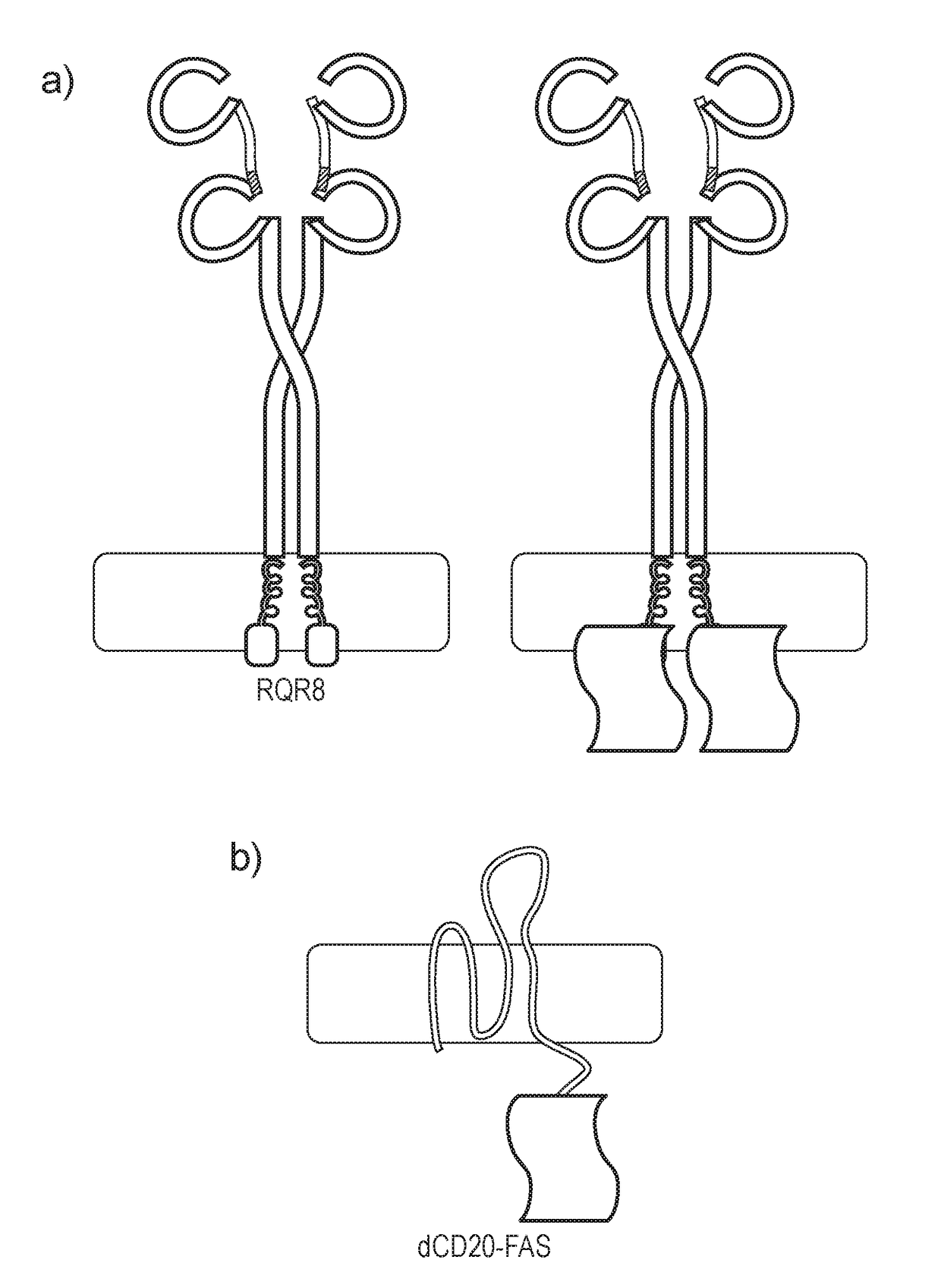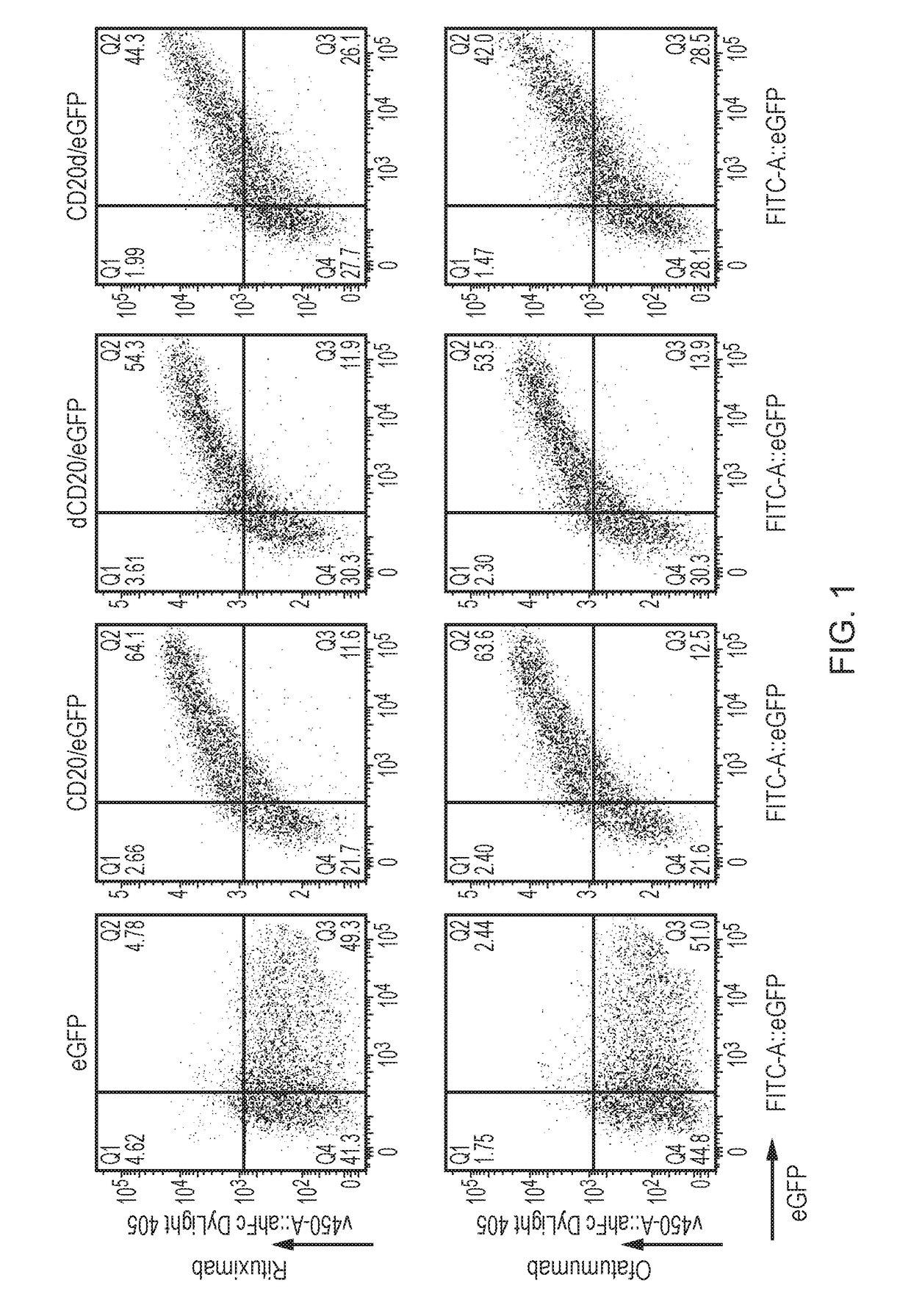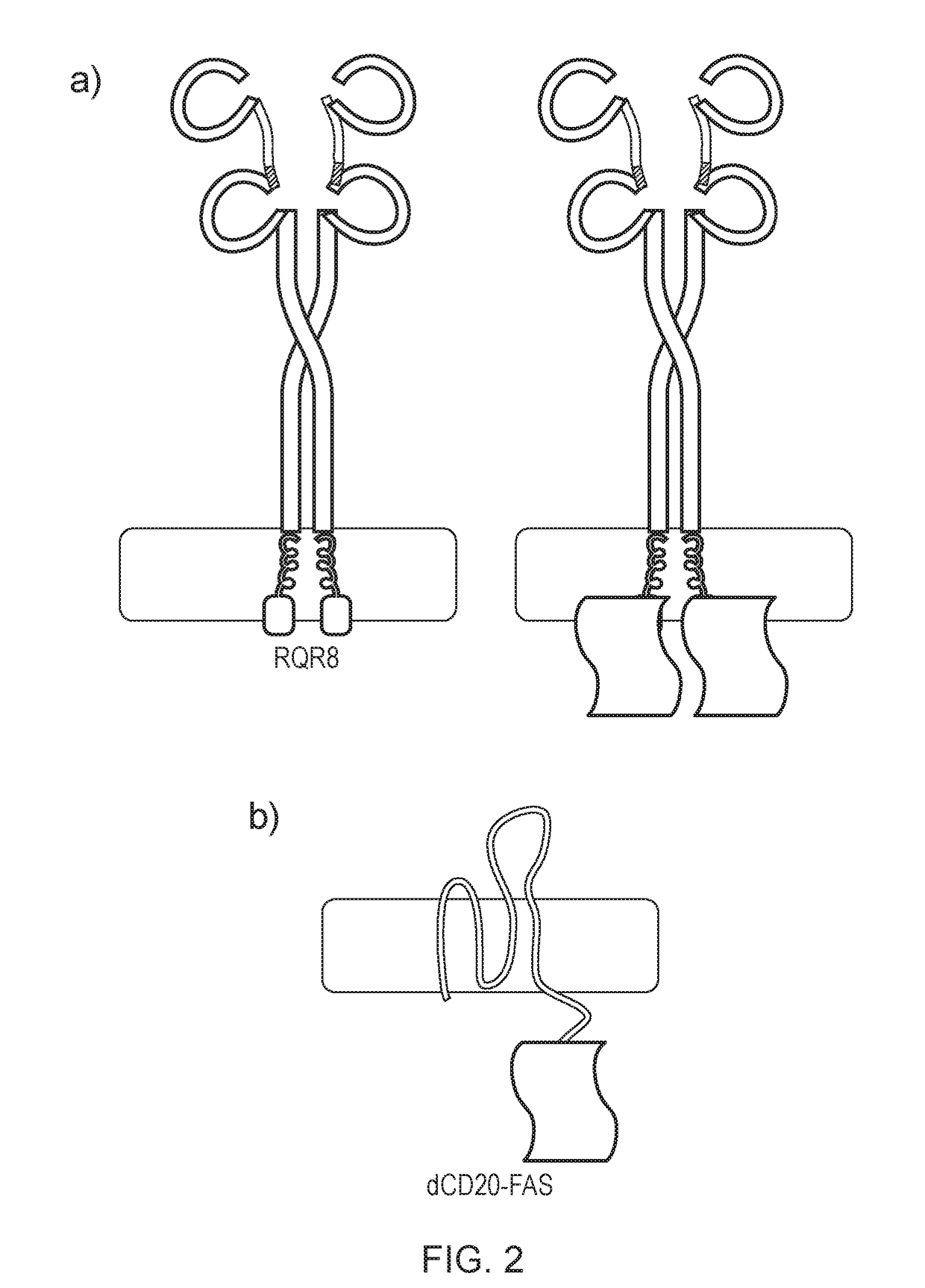Chimeric protein
a protein and chimeric technology, applied in the field of chimeric proteins, can solve the problems of high induced toxicity, administration of engineered t-cells, and the possibility of acute adverse events, and achieve the effect of low basal toxicity and high induced toxicity
- Summary
- Abstract
- Description
- Claims
- Application Information
AI Technical Summary
Benefits of technology
Problems solved by technology
Method used
Image
Examples
example 1
runcated Versions of CD20
[0225]CD20 is a multi-spanning membrane protein expressed on B cells and on almost all B-cell lymphomas, hairy cell leukemia and B-cell chronic lymphocytic leukemia. CD20 has two extracellular loops: a minor loop and a major loop constrained by a di-sulfide bond. It has an amino-terminal and carboxy-terminal endodomain.
[0226]CD20 is recognised by a number of therapeutic monoclonal antibodies, including Rituximab and Ofatumumab. The present inventors sought to determine whether CD20 with a deletion of the amino or carboxy endodomain termini could still be recognised by such antibodies.
[0227]To this end: full-length CD20; an amino-terminal (endodomain) truncate of CD20; and a carboxy-terminal (endodomain) truncate of CD20 were each fused with eGFP. 293T cells were transfected with these plasmids and stained with Rituxumab or Ofatumumab. Flow-cytometric analysis showed that these truncations made no difference to surface expression / recognition of CD20 (FIG. 1)....
example 2
n of a FAS Chimera with Low Basal Toxicity
[0228]Expression of a simple FAS chimera (for example a fusion between RQR8 and FAS), or a chimeric antigen receptor with a FAS endodomain (Tone et al (2013) Hum. Gene Ther. Methods 24, 141-150) results in significant basal toxicity. Since FAS is such a sensitive trigger of apoptosis, it may be that simple over-expression leads to spontaneous activation.
[0229]In order to test this, a FAS chimera was generated which was a fusion between a multi-membrane spanning protein and FAS. This should result in “padding out” the FAS endodomains, reducing the probability of spontaneous activation and hence reducing or eliminating basal toxicity. CD20 was chosen as the multi-spanning protein and the carboxy-terminus of the amino-terminally truncated version of CD20 was fused to the endodomain of FAS, to create dCD20-FAS (FIG. 2b).
[0230]The constructs also co-expressed eGFP which enables their expression and function to be studied. RQR8 and RQR8-FAS, a var...
example 3
ting Sensitivity to Rituximab
[0231]Jurkat T-cells were transduced with dCD20-FAS and exposed to different concentrations of Rituximab (without complement) and a time-course performed. FAS mediated apoptosis is expected to activate relatively slowly. Apoptosis was determined by staining T-cells with Annexin-V / 7AAD. Remarkably, as shown in FIG. 4, in the 24 and 48 h time course the concentration of Rituximab which kills 50% of cells is below 3.125 ug / ml. Further experiments were performed where killing of dCD20-FAS expressing T-cells were exposed to further dilutions of Rituximab for 48 hours (FIG. 5). This experiment indicated that dCD20-FAS affords a very sensitive activation with percentage which kills 50% of cells being approximately 0.6 ug / ml. this is well below the ˜200 ug / ml therapeutic levels (Berinstein et al. (1998) Ann. Oncol. Off. J. Eur. Soc. Med. Oncol. ESMO 9, 995-1001).
PUM
| Property | Measurement | Unit |
|---|---|---|
| concentration | aaaaa | aaaaa |
| concentration | aaaaa | aaaaa |
| therapeutic concentrations | aaaaa | aaaaa |
Abstract
Description
Claims
Application Information
 Login to View More
Login to View More - R&D
- Intellectual Property
- Life Sciences
- Materials
- Tech Scout
- Unparalleled Data Quality
- Higher Quality Content
- 60% Fewer Hallucinations
Browse by: Latest US Patents, China's latest patents, Technical Efficacy Thesaurus, Application Domain, Technology Topic, Popular Technical Reports.
© 2025 PatSnap. All rights reserved.Legal|Privacy policy|Modern Slavery Act Transparency Statement|Sitemap|About US| Contact US: help@patsnap.com



